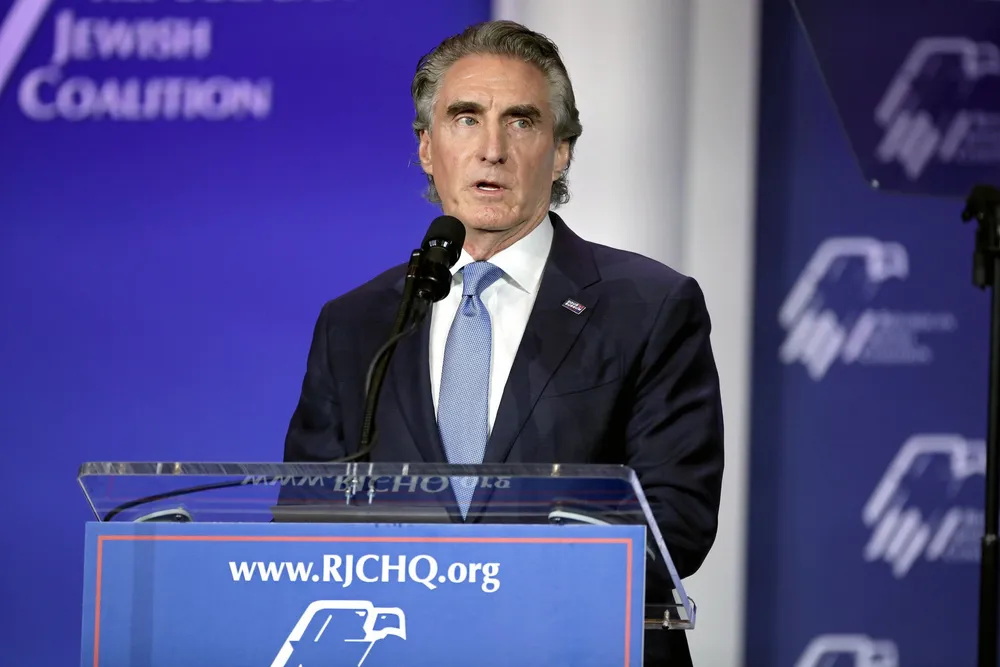US Interior head Burgum offers a ray of hope for existing offshore wind arrays
Former governor of leading wind and fossil energy state told Bloomberg existing projects 'will receive different treatment than those that are proposed'

US offshore wind advocates who thought the nearly 19GW of capacity approved under former President Joe Biden were safe from interference had a rude awakening 20 January when Donald Trump’s anti-wind broadside included reviews for existing projects with a view toward termination or amendment.
The industry had assumed that that Trump would ban leasing and further permitting, but lawfully approved capacity would go ahead regardless, sufficient to kickstart supply chain development over the next four years with the hope of friendlier future administration.
Now, Trump’s Interior secretary Doug Burgum seems to have offered some hope that consented capacity may go forward after all.
“By executive order, we are looking at all the wind projects that are going on, and existing ones will receive different treatment than those that are proposed,” he told Bloomberg during a visit to an LNG export facility in Louisiana. “But I won’t be pre-determinant. We are in the process of taking a look at those.”
Eleven projects were consented under the Biden administration, including three that are in construction and one – Orsted’s South Fork – that is already commercially operating.
“Right now, the one thing the US offshore wind industry needs above all is greater certainty,” said Hillary Bright, executive director of industry advocacy group Turn Forward.
Industry reaction
Industry welcomed the glimmer of hope but differed on how to interpret Burgum's remarks.
Jason Ryan, spokesperson for industry group American Clean Power Association (ACP), said: “We are optimistic that once the administration recognises the thousands of jobs and billions of dollars the offshore wind industry is contributing to the US economy, along with the creation of more American-built ships, they will support the advancement of these crucial projects.”
Nick Zenkin, offshore wind lead for consultancy Xodus, saw Burgum's statement in line with industry expectations that permitted projects “will be able to maintain their lease areas and permits.
“While project permitting and, ultimately, installation schedules are likely to be impacted, any action to try to remove an issued lease or permit will be met with opposition,” he added.
Serene Hamsho, president of training institute American Offshore Wind Academy, was more skeptical.
“The key concern is whether such requirements will be used to pause or significantly delay the entire process. Ultimately, the extent to which these reviews will impact approvals remains unclear and can't be interpretated from [Burgum's] quote.”
Philip Totaro, CEO of renewables market consultancy IntelStor, said the uncertainty Trump's administration is inflicting, “whether on policy itself, or regulatory enforcement, creates chaos in an industry which is dependent on investor confidence.
Turmoil in the US sector has resulted in billions of dollars in impairments for developers.
Trump impacts
Oil major Shell withdrew from its 1.5GW Atlantic Shores project under development by its JV with French energy firm EDF after posting a $996m impairment.
Early-stage projects in the New York Bight may be hit especially hard. Six leases were sold in the federal auction in 2022 for a record $4.34bn – some $2.17m per sq. km.
These projects have barely begun site assessment, potentially leaving them vulnerable in Trump’s mandatory review.
Industry advocates remain hopeful that they can persuade the new administration that offshore wind can play a critical role in Trump’s drive for “American energy dominance”.
“Offshore wind stands to play a pivotal role in supporting the Administration’s energy dominance agenda by creating new US jobs, addressing soaring electricity demand, and powering millions of homes,” said Bright.
“We should advance as many of these multibillion-dollar projects as possible.”
(Copyright)